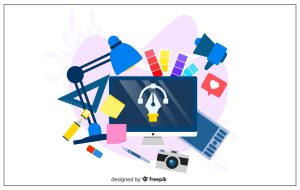Business Model Canvas For Social Enterprises: Creating Positive Impact

Social enterprises are businesses that exist to create a positive impact on society, often through addressing social or environmental issues. These organizations have a unique set of challenges, including balancing their mission with financial sustainability. The business model canvas (BMC) is a powerful tool that can help social enterprises create a sustainable business model while fulfilling their social mission. In this article, we will explore how social enterprises can use the business model canvas to create positive impact. Here’s a free template from Digital Leadership!
What is a Social Enterprise?
A social enterprise is a business that has a social or environmental mission at its core. This mission drives the business’s decisions, from product design to hiring practices. Social enterprises aim to create positive impact by addressing social or environmental challenges, such as poverty, inequality, or climate change. These organizations are unique in that they prioritize social impact over profit, but still need to be financially sustainable to achieve their mission.
Why Use the Business Model Canvas for Social Enterprises?
The business model canvas is a powerful tool for any organization looking to create or refine its business model. For social enterprises, it can be especially valuable because it helps balance the organization’s mission with financial sustainability. By using the BMC, social enterprises can:
- Define their mission: The business model canvas helps social enterprises clarify their mission and identify the social or environmental challenge they want to address. This can help the organization stay focused on its purpose and create a clear value proposition for its stakeholders.
- Identify their beneficiaries: Social enterprises often have multiple stakeholders, including beneficiaries, customers, and partners. The BMC can help social enterprises identify and prioritize these stakeholders and understand their needs.
- Develop innovative solutions: Social enterprises need to be creative in their approach to social and environmental challenges. The BMC encourages thinking outside the box and can help social enterprises identify new solutions and business models.
- Ensure financial sustainability: While social enterprises prioritize social impact, they still need to be financially sustainable to achieve their mission. The BMC helps social enterprises identify revenue streams, cost structures, and partnerships that can support their mission while also generating revenue.
How to Use the Business Model Canvas for Social Enterprises
To use the business model canvas effectively, social enterprises should follow these steps:
- Identify the social or environmental challenge: Social enterprises should start by identifying the challenge they want to address. This could be anything from poverty to climate change.
- Define the mission: Next, social enterprises should define their mission and how it aligns with their chosen challenge. This should be a clear statement that articulates the organization’s purpose.
- Identify beneficiaries: Social enterprises should identify the beneficiaries of their work, such as the people or communities they aim to help.
- Define the value proposition: Social enterprises should create a clear value proposition that outlines how their work creates value for their beneficiaries, customers, and partners.
- Identify revenue streams: Social enterprises should identify revenue streams that can support their mission. This could include grants, donations, sales, or partnerships.
- Develop partnerships: Social enterprises should identify partnerships that can support their mission and bring in additional resources, expertise, or support.
- Test and iterate: Finally, social enterprises should test their business model and iterate based on feedback and results.
Benefits of Using the Business Model Canvas for Social Enterprises
Clearly Define Social Impact Goals
One of the biggest advantages of the business model canvas is that it helps social enterprises to clearly define their social impact goals. By using the “Value Proposition” and “Customer Segments” blocks of the canvas, social enterprises can identify the specific social issues they want to address, and the target audience they want to serve. This allows the organization to stay focused on its mission and to design its products or services with a clear understanding of the needs of its target market.
Identify and Address Challenges
Social enterprises face unique challenges that are often related to creating social impact while also maintaining financial sustainability. The business model canvas can help social enterprises to identify these challenges and address them proactively. For example, the “Revenue Streams” and “Cost Structure” blocks can be used to ensure that the organization is generating enough revenue to cover its costs, while also delivering social value.
Collaborate Effectively with Stakeholders
Social enterprises often work with a diverse group of stakeholders, including beneficiaries, investors, employees, and partners. The business model canvas can help social enterprises to collaborate effectively with these stakeholders, by providing a clear visual representation of the organization’s business model and its impact. This can help to build trust and transparency with stakeholders, and to ensure that everyone is aligned on the organization’s goals and objectives.
Continuously Improve and Innovate
Social enterprises operate in a constantly changing environment, with new social issues emerging and evolving over time. The business model canvas can help social enterprises to continuously improve and innovate, by providing a flexible framework for testing and refining their business models. The canvas allows social enterprises to experiment with different revenue streams, customer segments, and value propositions, while still maintaining a focus on their social impact goals.
Conclusion
Social enterprises have a unique set of challenges, but the business model canvas can help them create a sustainable business model while fulfilling their social mission. By using the BMC, social enterprises can clarify their mission, identify stakeholders, develop innovative solutions, and ensure financial sustainability. The business model canvas is a powerful tool that can help social enterprises create positive impact while achieving financial sustainability.



